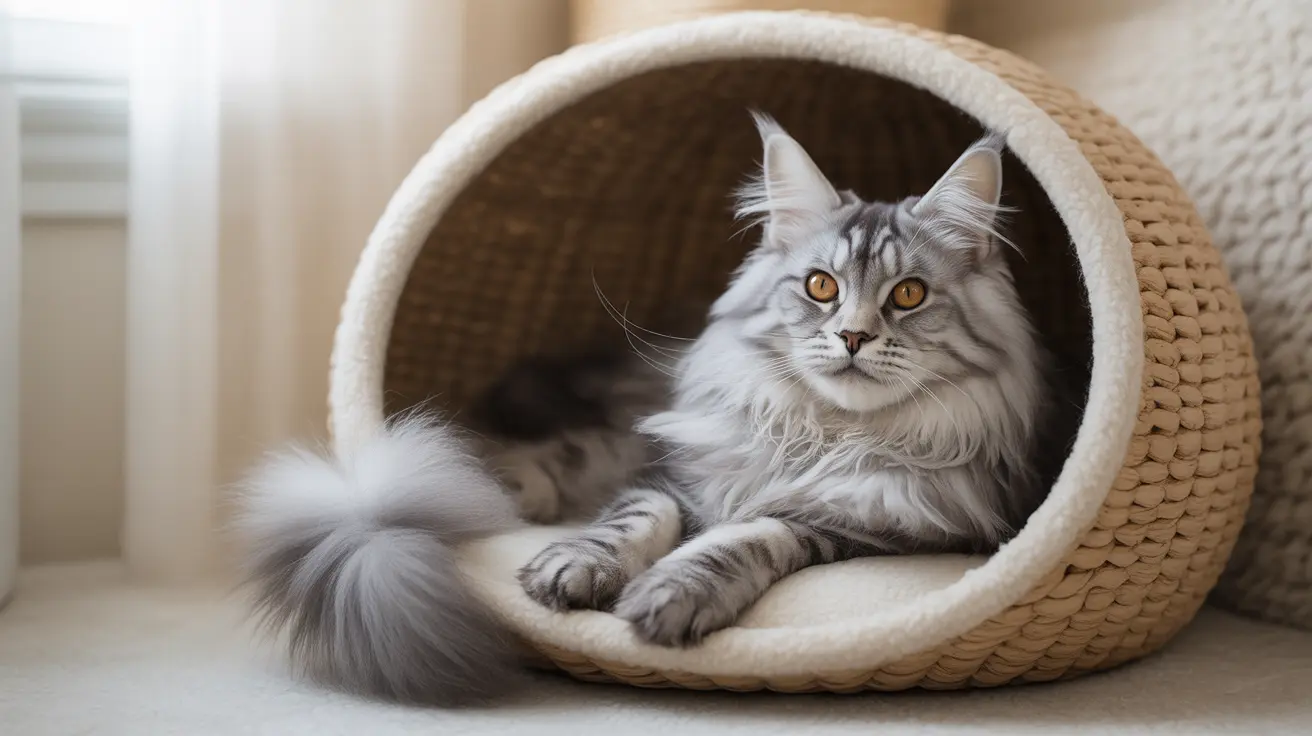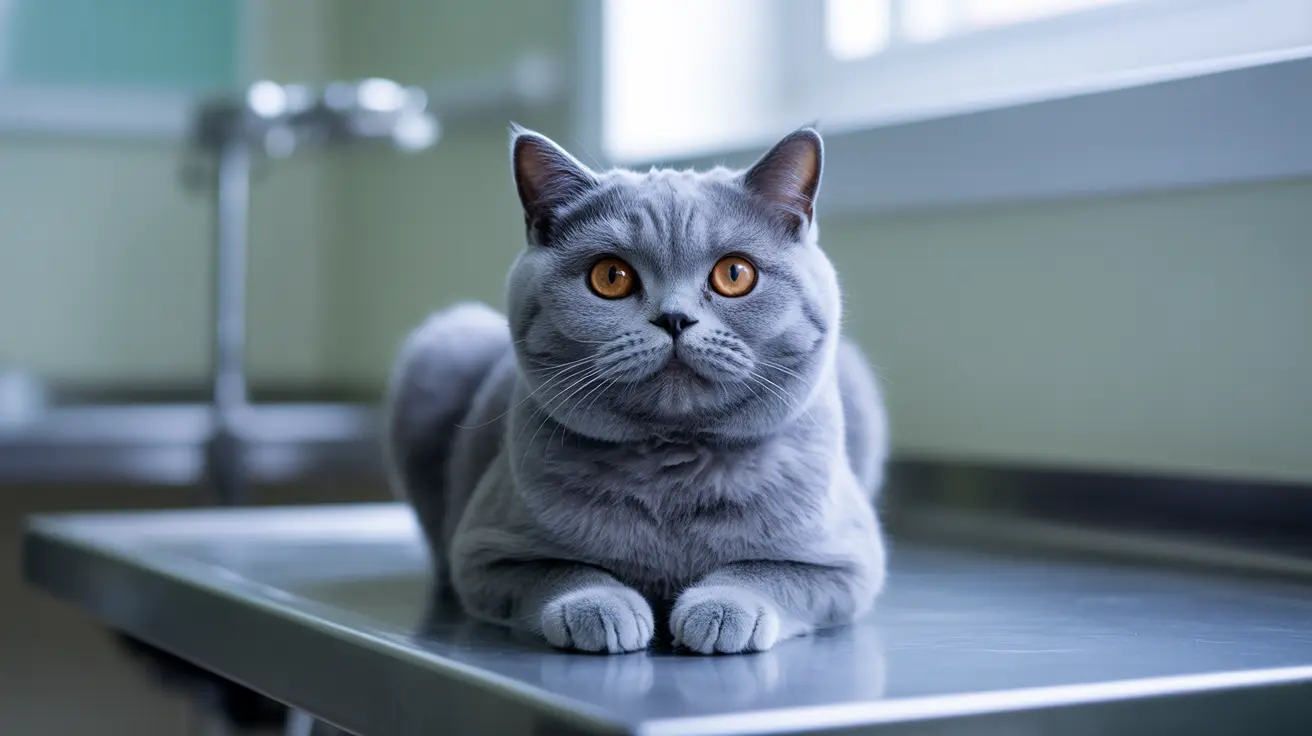Essential Cat Supplies for New Owners: Your Complete Guide to Feline Care
Bringing home your first cat is an exciting milestone, but proper preparation is key to ensuring your new feline friend thrives in their forever home. Whether you're adopting a playful kitten or a mature cat, having the right essential cat supplies for new owners ready before their arrival will help create a smooth transition and establish a foundation for years of companionship.
Understanding what your cat truly needs—beyond the obvious basics—can make the difference between a stressed pet struggling to adapt and a confident, comfortable companion who settles in quickly. From selecting the proper litter box setup to choosing nutritionally appropriate food, each supply decision impacts your cat's health, happiness, and overall well-being.
This comprehensive guide will walk you through every essential supply your new cat needs, helping you create a safe, comfortable, and enriching environment that addresses their natural instincts and daily care requirements.
Fundamental Living Essentials for Your New Cat
Setting Up the Perfect Sleeping Area
Creating a comfortable and consistent sleeping space is crucial for helping your new cat feel secure in their new environment. Cats spend 12-16 hours per day sleeping, making this one of the most important aspects of their comfort. Consider your cat's personality when selecting bedding options—some prefer enclosed cave-style beds that provide security, while others enjoy open beds where they can observe their surroundings.
Start with a cozy, washable bed placed in a quiet area of your home away from high-traffic zones. Many cats also appreciate having multiple sleeping options throughout the house, including cardboard boxes which can serve as both hiding spots and comfortable resting areas during the adjustment period.
Essential Transportation: Choosing the Right Cat Carrier
A sturdy, well-ventilated cat carrier is absolutely essential for vet visits, emergencies, and any travel with your feline companion. When selecting a carrier, ensure it's large enough for your cat to stand, turn around, and lie down comfortably. For cats who will be frequent travelers, consider adding a thick mat inside the carrier for extra comfort during longer journeys.
The carrier also serves as a safe space during your cat's initial adjustment period and can double as a temporary retreat when your pet feels overwhelmed by their new environment.
Nutrition and Feeding Fundamentals
Selecting Appropriate Food and Feeding Supplies
Proper nutrition forms the cornerstone of your cat's health and longevity. When bringing home a new cat, start by feeding them the same food they were eating in their previous environment to ease the transition and prevent digestive upset. If you plan to switch foods, do so gradually over about a week, mixing increasing amounts of the new food with decreasing amounts of the old food.
For kittens, choose foods specially formulated for growth stages that are rich in fats and proteins, specifically labeled as "Complete and Balanced Nutrition for all life stages." Adult and elderly cats have different nutritional needs, with older cats sometimes requiring wet or moistened food for easier consumption and better hydration.
Optimal Bowl Selection and Feeding Setup
Invest in ceramic or stainless steel food and water bowls rather than plastic alternatives. Plastic bowls can harbor bacteria and may cause chin rash in sensitive cats. Provide at least two food bowls and several water bowls throughout your home to encourage proper hydration and accommodate your cat's preferences.
Consider your feeding schedule carefully—you can either feed two meals daily at set times or provide free-choice feeding, though free feeding can lead to overeating in some cats. Automatic feeders can help maintain regular feeding schedules and are particularly useful for working pet owners.
Treating and Hydration Strategies
Treats should be given in moderation to avoid interfering with regular food intake and to prevent weight gain. Use treats primarily as rewards for good behavior rather than as regular supplements to meals. Focus on high-quality treats that complement your cat's nutritional needs.
Encouraging proper hydration is crucial for feline health. Consider investing in a water fountain, as many cats prefer moving water and will drink more from these devices. Place multiple water sources throughout your home and keep them fresh and clean.
Litter Box Setup and Maintenance
Choosing the Right Litter Box Configuration
Each cat in your household should have their own litter box, plus one additional box—meaning if you have one cat, provide two litter boxes. This "one per cat plus one" rule helps prevent territorial issues and ensures your cat always has access to a clean elimination area.
Select litter boxes appropriate for your cat's size and age. Adult cats need boxes with higher sides to contain litter, while kittens and elderly cats benefit from boxes with lower sides for easier access. Choose uncovered litter boxes when possible, as many cats prefer the open design and better ventilation.
Litter Selection and Maintenance
Use unscented, low-dust litter to avoid respiratory irritation and strong odors that might deter your cat from using the box. Plant-based litters are often preferable for both environmental and health reasons. Always include a litter mat around the box to catch tracked litter and make cleaning easier.
Maintain litter box cleanliness through daily scooping and regular deep cleaning with mild, non-toxic cleaning agents. Poor litter box maintenance is one of the leading causes of elimination problems in cats, so consistency in this area is essential for success.
Physical and Mental Enrichment Supplies
Scratching Posts and Cat Trees
Scratching posts and cat trees serve multiple essential purposes beyond protecting your furniture. They help maintain your cat's claw health, provide exercise opportunities, offer climbing and perching spots, and create safe retreat spaces, especially important for cats adjusting to new homes.
Invest in tall, sturdy scratching posts that won't wobble during use. Cat trees provide additional benefits by creating vertical territory and multiple levels for exploration and rest. For budget-conscious owners, cardboard scratchers offer an affordable alternative that many cats enjoy just as much as traditional posts.
Place scratching posts near your cat's sleeping areas and high-traffic zones where they naturally want to stretch and scratch. Use scent transfer techniques by rubbing the post with catnip or your cat's own scent to encourage use.
Toy Selection and Rotation Strategy
Provide a diverse selection of toys to satisfy your cat's natural hunting instincts and provide mental stimulation. Essential toy categories include interactive fishing pole-style toys, balls, feather toys, mice, and catnip-filled options. Remember that household items like cardboard rolls, plastic rings, and paper bags (with handles removed) also make excellent, affordable toys.
Rotate toys weekly to maintain your cat's interest and prevent boredom. During playtime, avoid using your hands as toys to prevent your cat from developing inappropriate play behaviors. Instead, use interactive toys that allow you to engage your cat while keeping your hands at a safe distance.
Grooming and Health Maintenance
Essential Grooming Tools
Regular grooming helps prevent matted fur, reduces shedding, and supports hairball prevention while strengthening the bond between you and your cat. Invest in a fine-toothed comb and rubber-backed pin brush appropriate for your cat's coat length and type.
Cat-specific nail clippers with scissor-shaped design work best for maintaining claw health. Regular nail trimming every 2-3 weeks helps prevent overgrowth and reduces damage from scratching. Additionally, consider dental care supplies including cat toothpaste and toothbrush for long-term oral health maintenance.
Safety and Identification
A breakaway collar with current ID information provides crucial safety protection should your cat accidentally escape. These specialized collars are designed to release if caught on objects, preventing choking hazards while still providing identification.
Ensure your cat's microchip information remains up to date, as this provides permanent identification that cannot be lost like collars or tags. For cats who will have supervised outdoor time, consider harness and leash training as a safe alternative to free roaming.
Creating a Stress-Free Transition Environment
Initial Confinement and Gradual Introduction
When first bringing your cat home, confine them to one room equipped with all necessary supplies including food, water, litter box, bed, toys, and hiding places. This approach prevents overwhelming your new pet and allows them to adjust gradually to their new environment.
Provide hiding places such as cardboard boxes and ensure your cat has access to both high perches and low retreat areas. Allow your cat to expand their territory at their own pace as they become more confident and comfortable.
Recognizing and Managing Stress
New cats commonly experience stress during transitions, showing signs like hiding, decreased appetite, reduced grooming, or changes in elimination habits. Allow your cat space and time to adjust, avoiding forced interactions while providing positive associations through gentle coaxing with toys and treats.
If stress symptoms persist beyond the initial adjustment period, consult with a veterinarian or animal behaviorist for additional support strategies. Building trust requires patience and consistency, but most cats adapt successfully when given appropriate time and space.
Special Considerations for Different Life Stages
Kitten-Specific Needs
Kittens require specialized attention to their developmental needs. Use foods specifically formulated for growth stages, provide kitten-appropriate toys that are small enough for their size but large enough to prevent choking, and wait until at least six months of age before introducing collars.
Litter box training may be necessary for very young kittens, and you may need to provide boxes with lower sides for easier access during their growth period.
Senior Cat Considerations
Elderly cats benefit from extra-soft bedding, easily accessible food and water dishes, and may prefer wet or moistened food for easier consumption. Consider litter boxes with lower sides or ramp modifications for arthritic cats, and remember that older cats still enjoy play and climbing activities when provided with appropriate options.
Multi-Cat Household Management
Territorial Considerations and Supply Distribution
In multi-cat households, territorial behavior around resources can create stress and conflicts. Provide multiple feeding stations, water sources, and litter boxes distributed throughout your home to reduce competition and ensure all cats have access to necessary supplies.
Each cat should have their own food and water bowls, and following the "one litter box per cat plus one extra" rule becomes even more critical in multi-cat situations. Monitor interactions during feeding times and provide separate spaces if needed to prevent food guarding or bullying behaviors.
Safe Outdoor Enrichment Options
Indoor Alternatives to Free Roaming
For cats' safety, avoid allowing unsupervised outdoor access. Instead, provide safe outdoor enrichment through window perches that allow bird and wildlife watching, harness and leash training for supervised walks, or consider installing a catio (cat patio) for secure outdoor time.
These alternatives satisfy your cat's desire for outdoor stimulation while protecting them from traffic, predators, diseases, and other outdoor hazards that significantly reduce outdoor cats' lifespans.
Common Mistakes New Cat Owners Should Avoid
Preparation and Patience Pitfalls
Many first-time cat owners underestimate the importance of having supplies ready before bringing their cat home, leading to stressful shopping trips with an unsettled pet. Others rush the introduction process, not allowing adequate time for their cat to adjust to new environments, people, or other pets.
Avoid using inappropriate cleaning products around litter areas, as strong chemicals can deter cats from using their boxes. Similarly, don't assume all cats will immediately love the supplies you've chosen—be prepared to try different options if your cat shows preferences for alternative arrangements.
Frequently Asked Questions
How many litter boxes do I need for one cat?
You should provide at least two litter boxes for a single cat, following the "one per cat plus one extra" rule. This ensures your cat always has access to a clean elimination area and prevents problems if one box becomes soiled or inaccessible.
Can I use plastic food and water bowls for my new cat?
It's better to use ceramic or stainless steel bowls instead of plastic. Plastic bowls can harbor bacteria buildup and may cause chin rash in sensitive cats. Ceramic and stainless steel options are more hygienic, dishwasher-safe, and generally more durable.
Should I change my new cat's food immediately?
No, continue feeding your new cat the food they were eating before to ease their transition. If you want to switch foods, do so gradually over about a week, mixing increasing amounts of new food with decreasing amounts of the old food to prevent digestive upset.
How often should I rotate my cat's toys?
Rotate your cat's toys weekly to maintain their interest and prevent boredom. This strategy keeps playtime engaging and helps stimulate your cat's natural hunting instincts by providing variety in their environment.
What type of scratching post is best for new cat owners?
Choose a tall, sturdy scratching post that won't wobble during use. Cat trees provide additional benefits with multiple levels and retreat spaces. For budget-conscious owners, cardboard scratchers are an affordable alternative that many cats enjoy equally.
How long does it typically take for a new cat to adjust to their home?
Most cats need several days to several weeks to fully adjust to their new environment. Initial stress signs like hiding, decreased appetite, or reduced grooming are normal. Allow your cat to adjust at their own pace and provide a quiet, safe space with all necessary supplies.
Do indoor cats really need cat grass?
Yes, indoor cats should have access to digestive aids like cat grass to help with hairball digestion, since they cannot naturally consume grass during outdoor exploration like outdoor cats do. Cat grass provides important digestive benefits and satisfies natural grazing instincts.
Conclusion
Successfully preparing for your new feline companion requires thoughtful planning and investment in quality essential cat supplies for new owners. From establishing comfortable sleeping areas and proper nutrition to providing mental stimulation and maintaining health through grooming supplies, each element contributes to your cat's overall well-being and successful adaptation to their new home.
Remember that patience and consistency are your greatest tools during the transition period. Allow your new cat time to adjust, be prepared to modify your approach based on their individual preferences, and don't hesitate to consult with veterinary professionals when questions arise. With the right supplies and mindset, you're setting the foundation for many years of rewarding companionship with your new feline friend.






